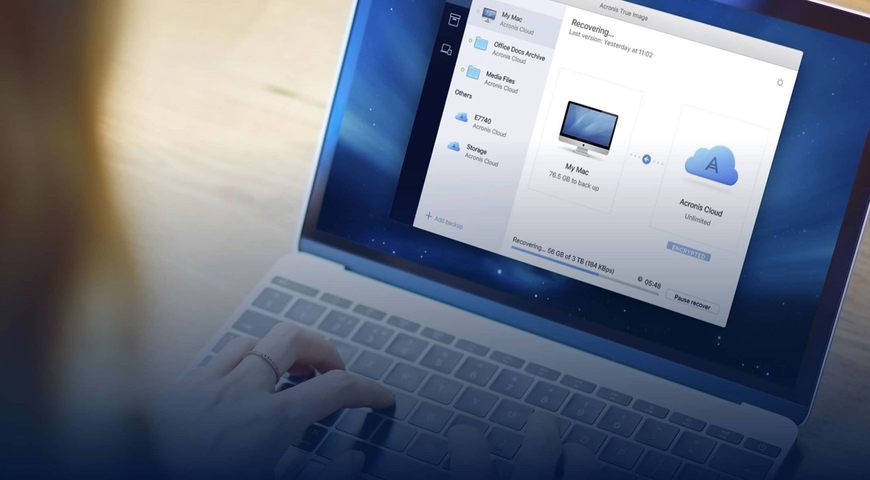It seems crazy now, but before iPhones and iPads became ubiquitous a decade ago, it was often difficult to find an Apple product in the workplace (not counting the iPods in use at the company gym, of course). Sure, there might have been a few artsy, creative types here and there using big screen iMacs, but most offices featured wall-to-wall PCs.
Windows ruled the day – and it seemed as if it always would.
Macs Are Becoming More Common in the Workplace
Times have changed. As employers came to grips with the BYOD trend – and forced their IT departments to support a wider range of devices – the use of Macs in the workplace evolved from the rare event to everyday fact of life. Recent surveys have shown that about half of all companies in North America and Western Europe are now issuing Macs to employees – despite the ongoing challenges that arise when you connect a Mac to a Windows server.

And it’s not just hip start-ups and smaller, nimble companies that are welcoming Macs into the fold. A number of industry behemoths – including Cisco, General Electric and, yes, even IBM (!) – now issue Macs to their employees.
Why are companies so accommodating? There are a number of reasons:
- Worker happiness/talent recruitment – People like Macs and want to use them for work, so giving workers the flexibility to choose their work devices keeps them happy. It’s also a nice carrot that companies can dangle when competing for new employees.
- Security – Macs are widely considered to be more secure than PCs and less susceptible to viruses and malware.
- Public perception – Mac usage conveys to customers and clients that your business is modern, open-minded and comfortable with new technology.
- Productivity – Many believe Macs are more reliable than PCs and require fewer calls to the help desk, making workers more productive and freeing the IT department to focus on real challenges.
This is all great news for those who embrace tech diversity in the workplace. The problem is that even though Mac adoption has grown in the business world, many of the old incompatibilities between Macs and Windows environments remain.
Problems crop up when you connect Mac to Windows
New hires might believe they’re going to be more productive when they’re handed that sleek new MacBook on their first day, but the truth is that network issues could cause them serious headaches and downtime.
That’s because of Apple’s use of the proprietary Apple Filing Protocol (AFP) in its operating systems. Most businesses use Windows file servers, so when the AFB-based Macs want to connect to those servers, they have to compromise and use the Server Messaging Block (SMB) protocol in order to share files.
For all the things Apple has done right over the years, it’s never really gotten the hang of SMB, which is designed for Windows file sharing but doesn’t support the full semantics of macOS file systems. Macs come with their own built-in SMB client, but each iteration of Apple’s signature operating system has grappled to one degree or another with things like:
- Long delays in mounting shares, browsing folders and opening files
- Slow file searches
- Application crashes
- File corruption
- Problems with permissions
- Disappearing files
- Disconnected sessions
- Locked files
- File name incompatibilities
These problems are heightened when using key applications like Microsoft Office and Adobe Creative Suite. To the end user, it all just adds up to poor overall performance – which undermines all of the other wonderful qualities for which Macs are beloved. And that frustration can lead to reduced productivity.
All is not lost, however.
Acronis Files Connect: The easy way to connect a Mac to a Windows network
Acronis Files Connect, a file and print sharing solution, allows Macs to connect to file shares on Windows servers and NAS systems via AFB instead of SMB. It eliminates those annoying SMB protocol issues and performance and compatibility problems once and for all – and provides the rich user experience Mac aficionados are accustomed to.
With Acronis Files Connect, Mac users get:
- Faster file share mounting, folder browsing, and file opening.
- Searches that are up to 600 times faster.
- Better integration with Windows infrastructure components like Active Directory.
In addition, Acronis Files Connect enables Mac users to take advantage of the full functionality of their machines, such as Spotlight Search.
Normally when users connect a Mac to a Windows domain or NAS file share over SMB, they have to say goodbye to Spotlight’s lightning-quick file name and content searches. By allowing the Mac to connect to file shares via its native AFP, Acronis Files Connect ensures that Spotlight Search’s retains its robust functionality.
Ultimately, Acronis Files Connect makes the connection between Macs and Windows so seamless that Mac users won’t even realize they’re in a Windows environment.
Few could have imagined this tech marriage working 10 or 15 years ago when Windows and Mac were highlighting their differences with catchy ad campaigns. But with tools like Acronis Files Connect integrating Mac and Windows environments, the union is likely to last long into the future.
About Acronis
A Swiss company founded in Singapore in 2003, Acronis has 15 offices worldwide and employees in 50+ countries. Acronis Cyber Protect Cloud is available in 26 languages in 150 countries and is used by over 20,000 service providers to protect over 750,000 businesses.




